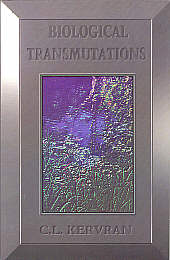
uch ado has been made in recent
years about our society's systemic increase
in mineral deficiencies, rooted
in our repeated use of mineral-depleted agricultural
topsoils. (We touch on this subject in both our
articles on
Lugol's iodine
and
coral calcium.)

That
silicon
would be largely overlooked as a vital trace mineral
(despite niche markets where silica products are
promoted to strenthen nails) is not
surprising. The average human body only contains
about 7 grams -- most of it bonded to glycoproteins
(i.e. cartilage). (Silicon found in the blood is
found as free orthosilicic acid or is linked to
smaller compounds.) In fact, the entire subject of
"silicon nutrition" has largely remained a subject
of agricultural and horticulture, where studies
have shown that certain crops, notably
rice,
sugar cane, corn, wheat, and barley suffer
substantially from inadequate levels of silicon uptake -- (a
problem for which
potassium silicate
is a commonly recommended soil remedy and
interest
in silicon fertization has been initiated).

This is not to
say that silicon deficiency has not been proven to
be an issue in animal (and human) dietary habits.
Studies in the early 70's using
rats and chickens fed silicon-deficient
diets resulted in skeletal deformities,
abnormal skulls and long bone structures, and
poorly-formed joints with decreased cartilage
content. (1) More recent research involving
biochemical analysis showed that silicon is
a vital nutrient for the structural integrity
and development of connective tissue (2), which
is composed of cells producing fibrous protein
matrixes of collagen and elastin, in addition
to glycosaminoglycans (GAG). (3) Silicon
is thought to stabilize this matrix. (11)

But the
role of silicon goes well beyond its contribution
to creating and sustaining vital connective tissue.
Silicon is a major ion in osteogenic cells -- the
bone-forming cells in young, uncalcified bone.
As bone ages, silicon concentration decreases,
while calcium and phosphorus are created in its
stead. Researchers have concluded that silicon
is a regulating factor for the deposition of
calcium and phosphorus in bone tissue (4).
But just as important is that fact that silicon
has a vital role in maintaining bones after
formation. In fact, silicon supplementation
reduces the number of osteoclast cells, which
are responsible for bone reabsorption and
bone loss (5) -- (osteoclast cells "digest"
bone as part of a recycling process, and an
excess of osteoclast activity in the absence
of bone formation gives rise to osteoporosis).
Another study has shown that silicon
supplementation actually prevents bone loss, (6)
while another clinical report of 53 osteoporotic
women using silicon supplementation shows
a substantial increase in mineral bone density
in the femur. (7)
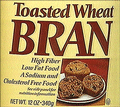
Dietary Silicon

Dietary silicon comes
primarily from plants, which absorb orthosilicic acid
from the soil and convert it to polymerized silicon. (8)
Oats, wheat bran, and vegetables have a relatively
high silicon concentration relative to other natural
foods -- these help deliver the 20 to 50 mg. in
average daily dietary intake of silicon. (9)

The bigger problem,
of course, is bioavailability. These natural silicon
dietary sources are insoluble and cannot be directly digested
in the GI tract. Dietary silicon is broken down
into orthosilicic acid by stomachic hydrochloric
acid, so that it can be absorbed in the stomach
and small intestines. As we age, stomach acids
diminish in strength (i.e. pH increases), which
means that the actual amount of silicon absorbed
from food experiences a gradual decline. (This
is why stabilized hydronium is an active ingredient
in
AO Bone Builder -- it provides the acidified
environment necessary for the body to make
orthosilicic acid. One supporting note: the function
of the stomach is metabolizing silicon is so important,
that
stomach
surgery is a recognized in woman
as an
etiological risk factor for osteoporosis.) (10)
 "Now the manna was like
coriander
seed, and its appearance like that of
bdellium.
And the people
would go about and gather it and grind it between two
millstones or beat it in the mortar, and boil it in the
pot and make cakes with it; and its taste was as the taste
of cakes baked with oil." "Now the manna was like
coriander
seed, and its appearance like that of
bdellium.
And the people
would go about and gather it and grind it between two
millstones or beat it in the mortar, and boil it in the
pot and make cakes with it; and its taste was as the taste
of cakes baked with oil." ---- Numbers 11 : 7 - 8
Osteoporosis
& Steel-Ground Grains

 Flour milling is reported to be
the first fully automated manufacturing process of the Industrial Age.
American inventor and millwright Oliver Evans is credited with
implementing the automation of the flour milling in 1785.
In fact, Evans reportedly granted a license to Thomas Jefferson
in 1808 to use his mill improvements and modifications.
By 1870, flour mills required less than 3 employees; water
powered 70% of all mills; steam, the balance.

 In 1878 a fateful
development arose that wrought an increase in
milling efficiency and product uniformity, but initiated
a gradual, but dramatic, increase in a fairly uncommon
bone disease:
osteoporosis.
That development was the replacement
of millstones with corrugated cylindrical steel rollers.
In an age before the emergence of dietary and nutritional
sciences, no one knew that the silicon from the millstone
leached into the flour. No one knew that by eliminating
the millstone and replacing it with steel rollers, a valuable
source of this vital nutrient would be eliminated. Although
there is currently an
alarming
increase in the incidence of osteoporosis in the West
(about one
in three women will suffer from a osteoporotic fracture),
the cause is (we believe) inaccurately attributed to
insufficient calcium. In time, the true role of silicon
will be recognized -- and what we lost in abandoning an
ancient method of grinding grain, one that managed to make
osteoporosis a rare disease (now one quite common).
|

Other modern developments
in food production have worked to reduce available dietary
silicon. Both topsoil nutrient depletion and the emergence of aquacultures
diminish orthosilicic acid product in plants -- making crops
that are less rigid in structure due to reduced biosynthesis
of phytolytic fibers and specific epidermal cells containing
silica structures. Such crops have lower silicon concentration,
thus providing less dietary silicon than those foods grown
on mineral rich soil that has not been depleted through overuse.
Silicon Supplementation

There are, in addition to
AO Bone Builder (tm), a number of silicon supplementation
products on the market -- sufficient to warrant commentary.
Currently, nearly all silicon supplemental products fall into
one of three categories: (1) Colloidal silica gel, (2) Horsetail
or similar animal silica source, and (3) Concentrated orthosilicic
acid. The last category boasts a higher silicon absorption rate --
in other words, better silicon bioavailability or "biologically
active" silicon.

We have no doubt that
a concentrated orthosilicic acid will result in rapid silicon
absorption -- and the clinical tests behind approach appear to
be in good order. Our own belief, based on empirical evidence
we see in end users, is that a focus on blood silicon levels,
in and of itself, misses a much bigger picture. After all, remember
that the entire human body contains only 7 grams of silicon.
That is well under two-hundredths of a pound. To put this in
perspective, this equals the mass of about ten standard
supplement capsules ("double O's").
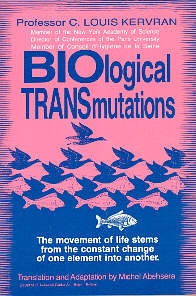

So is it the sheer
quantity of silicon that makes a difference in optimal
human nutrition as it pertains to this trace mineral?
Or an emphasis in its bioavailability in a form that
will allow it to
transmute into calcium?

The very suggestion is
heretical to doctors, nutritionists, dietitians, and biochemists
in the orthodox community, but not to those who are familiar
to the principles of
biological transmutations as
expounded by Professor C. Louis Kervran -- whose work is
widely respected in Japan and much of Europe.
(Read the sidebar to the right of this column.)
To those who understand the relationship between nutrient
quantity, true bioavailability, and optimal utilization,
more is not always better.

The
AO Bone Builder
formula is built around an understanding of creating stomachic
conditions that allow rapid update of silicon which the
body can use to fulfill its ultimate functions.
Ingredients:
Horse tail silica in an aqueous base of stabilized hydronium,
glycerine, stevia extract, Vitamin D3.
 Note: Note:
Refrigerate when not in use. Instructions: SHAKE WELL before each use,
since settling will occur as this product does not contain
emulsifying agents. Adults -- take 1 Tsp. (15 ml.)
once per day. Children -- take 1 tspn. (5 ml.) once
daily as a general supplement to build strong bones. Better
results are obtained if taken 30 minutes or more prior to a meal,
and if held sublingually for 20 seconds or more prior to swallowing.
|
Footnotes
(1) Calisle EM. Silicon, an essential element for the chick.
Science 1972, 178:619-621; and Schwartz K, et al.
Growth-promoting effects of silicon in rats.
Nature
1972, 239:333-334.
(2) Seaborn C, et al. Effects of germanium and silicon on
bone mineralization.
Biological Trace Element Res 1994,
42:151-164; Seaborn C, et al. Silicon deprivation decreases
collagen formation in wounds and bone, and ornithine
transminase enzyme activity in liver.
Biol Trace Elem Res
2002, 89(3):251-61.
(3) Schwartz K. A bound form of silicon in glycosaminoglycans
and polyuronides.
Proc Nat Acad Sci USA 1973,
70(5): 1608-1612.
(4) Reginster J. et al. Long-term effects of glucosamine sulphate
on osteoarthritis progression: a randonized, placebo-controlled
clinical trial.
Lancet 2001, 357:251:56.
(5) Hott M. et al. Short-term effects of organic silicon on
trabecular bone in mature overiectonized rats.
Calcif Tissue Int
1993, 53:174-179.
(6) Keeting et al. Zeolite A increase proliferation, differientation,
and transforming growth factor beta production in normal adult
human osteoblast-like cells in vitro.
J Bone and Miner Res
1992, 7(11): 1281-1289.
(7) Eisinger J. Clariet D. Effects of silicon, fluoride,
etidronate and magnesium on bone mineral density: a retrospective
study.
Magnesium Research 1993, 6(3):247-249.
(8) Sangstet AG, et al. Silica in higher plant nutrition.
In Silicon Biochemistry,
CIBA Foundation Symposium 121,
John Wiley & Sons, New York p. 90-110.
(9) Pennington JAT. Silicon in foods and diets.
Food Addit Contam 1991, 8:97-118.
(10) See -- http://pbl.cc.gatech.edu/mindy/93
(11)
Even
the USDA
has information on the role of silicon nutrition in affecting
the actions of extracellular matrix glycoproteins, thus "affecting
bone formation and turnover."
Español,
Português,
Deutsch
 Italiano,
Français,
Norsk
Italiano,
Français,
Norsk
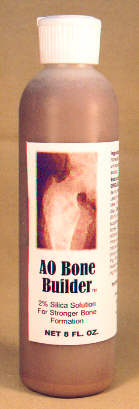
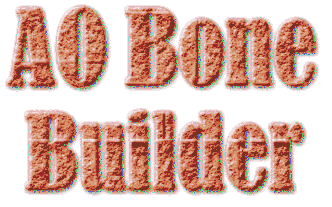
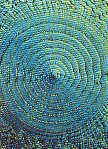
 uch ado has been made in recent
years about our society's systemic increase
in mineral deficiencies, rooted
in our repeated use of mineral-depleted agricultural
topsoils. (We touch on this subject in both our
articles on Lugol's iodine
and coral calcium.)
uch ado has been made in recent
years about our society's systemic increase
in mineral deficiencies, rooted
in our repeated use of mineral-depleted agricultural
topsoils. (We touch on this subject in both our
articles on Lugol's iodine
and coral calcium.) 

 Factoid:
Silicon (Si) is the most
abundant element in the Earth's crust after oxygen and is
an essential nutrient for both plants and animals.
It is the 14th element in the
Periodic Table,
and silicon compounds are ubiquitous in industrial
applications. Its role in biochemistry, however, is still an area of medical
exploration.
Factoid:
Silicon (Si) is the most
abundant element in the Earth's crust after oxygen and is
an essential nutrient for both plants and animals.
It is the 14th element in the
Periodic Table,
and silicon compounds are ubiquitous in industrial
applications. Its role in biochemistry, however, is still an area of medical
exploration.
